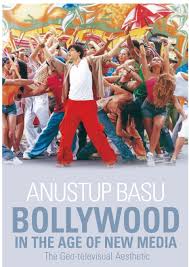The Shadows of the Silver Screen
Indian films are frequently associated with colorful dance sequences, melodious music, and romantic grandeur. But beneath this glossy exterior also lurks a genre of gritty, haunting poetry Bollywood Noir. Inspired by the dark, suggestive mises-en-scenes and taut plot lines of American film noirs of the 1940s and 50s, Bollywood Noir translates these elements to an Indian socio-political context. At the very heart of that genre is crime and class war, along with a unique look, and a specific way to tell it, these movies challenge everything normally associated with mainstream cinema to a form of social critique.
In this deep-dive, we’ll explore how Bollywood Noir has evolved, its key elements, standout films, and how it reflects India’s urban angst. We’ll also touch on why it’s gaining renewed interest in the age of streaming and global storytelling.
What is Bollywood Noir? A Genre Reborn in Mumbai’s Shadows
Bollywood Noir isn’t simply a style choice, it’s a lens through which to see society. Largely riffing on the look and narrative styles of Hollywood noir films (Double Indemnity and The Third Man come to mind), this sub-genre of Indian cinema appropriates the noir ethos with Mumbai’s slums, cynical bureaucracies and morally dubious characters.
Key Characteristics of Bollywood Noir:
- Moral ambiguity: Heroes are anti-heroes. Villains are victims.
- Urban setting: Typically set in Mumbai, often at night, in rain, or neon-lit streets.
- Class struggle: Central to the narrative, often pitting underdogs against systemic power.
- Femme fatales: Women who are as mysterious and complex as their male counterparts.
- Stylized cinematography: High-contrast lighting, deep shadows, and off-angle shots.
This fusion makes Bollywood Noir distinctively Indian while paying homage to its Western roots.
The Socio-Political Core: Crime and Class as Twin Engines
Crime in Bollywood Noir is never just about the act it’s about the why. These films delve into what drives individuals toward the edge: poverty, caste-based oppression, police brutality, and broken justice systems.
Class Conflict on the Big Screen
India’s complex socio-economic structure finds visceral expression in noir films. In movies like Satya (1998), the underworld isn’t glamorous it’s survival. The protagonists are often migrants, day laborers, or slum-dwellers navigating a corrupt, unforgiving metropolis.
Example: Black Friday (2004) by Anurag Kashyap
Black Friday(Bollywood)Based on the 1993 Bombay bombings, Black Friday doesn’t look at terrorism through spectacle, but by bureaucratic clueless, economic deprivation and alienation. The criminal is a product of environment, not born wicked.
The sense of nuance in these presentations is what speaks to urban audiences who inhabit the same gray areas shown in the films.
Cinematic Style: Aesthetic of Despair
Visually, Bollywood Noir embraces a moody, stylized aesthetic. Directors like Anurag Kashyap, Sriram Raghavan, and Vishal Bhardwaj use a blend of chiaroscuro lighting, handheld camera work, and off-kilter framing to mirror their characters’ inner turmoil.
Common Visual Motifs:
- Rain: Symbol of cleansing and chaos.
- Mirrors and reflections: Identity and duality.
- Dark alleys and neon lights: Spaces of secrecy and seduction.
Case Study: Johnny Gaddaar (2007)
A neo-noir thriller where style amplifies substance. The film’s use of silence, slow motion, and tight framing underscores the psychological descent of its characters.
The Evolution of Bollywood Noir: From Obscurity to Revival
Bollywood Noir was never mainstream, but it’s always been influential. Here’s how it evolved:
The Early Years: Seeds of Noir
Films like Pyaasa (1957) and Kaagaz Ke Phool (1959) dealt with disillusionment and social critique, laying thematic groundwork.
The Gangster Wave: 1990s and Early 2000s
With Satya, Company, and Shool, the gangster genre exploded, bringing noir to mass consciousness while infusing it with local flavor.
Neo-Noir in the Streaming Era
Platforms like Netflix and Prime have created space for complex storytelling. Films like Raman Raghav 2.0 and series like Sacred Games tap into noir’s psychological and societal layers with global appeal.
Why Bollywood Noir Resonates Today
In a hyperconnected world plagued by inequality, surveillance, and moral uncertainty, noir feels more relevant than ever. Bollywood Noir speaks to:
- Young urban viewers disillusioned by systemic failures.
- Global audiences seeking stories beyond Western tropes.
- Critics and cinephiles who crave layered, introspective cinema.
Additionally, noir’s flexibility allows it to merge with other genres—thriller, horror, drama—expanding its reach.
Impact on Indian Cinema and Beyond
Bollywood Noir has redefined Indian storytelling by:
- Elevating the crime genre with artistic depth.
- Challenging hero-worship tropes common in masala films.
- Inspiring a new wave of filmmakers who prioritize authenticity over gloss.
It’s also influenced global cinema. Directors like Danny Boyle (Slumdog Millionaire) and Richie Mehta (Delhi Crime) draw from Bollywood Noir’s gritty realism and human focus.
Noir is the New Normal
Now Bollywood Noir is more than just a cinematic style, it’s a cultural response to a society in transition. Viewed through the prism of crime and class, these movies go behind the curtain of upward mobility and reveal ugly realities and yet, as stories, they’re irresistibly gripping for the soul as well as the mind.
With urbanization and digital access, it won’t be an exception, but a benchmark within Indian Cinema in time to come.
FAQ: Bollywood Noir – All You Need to Know
Q1: What are the must-watch Bollywood Noir films?
Some essential titles include Satya (1998), Black Friday (2004), No Smoking (2007), Raman Raghav 2.0 (2016), and Andhadhun (2018).
Q2: How is Bollywood Noir different from Western film noir?
While both focus on crime and moral ambiguity, Bollywood Noir incorporates local socio-political issues like caste, corruption, and urban poverty, giving it a distinct cultural voice.
Q3: Is Bollywood Noir popular in mainstream Indian cinema?
Not traditionally. However, the rise of OTT platforms has made the genre more accessible and popular among niche and younger audiences.
Q4: Who are some key directors in Bollywood Noir?
Anurag Kashyap, Sriram Raghavan, Dibakar Banerjee, and Vishal Bhardwaj are considered pioneers in shaping this genre.
Q5: What are common themes in Bollywood Noir?
Themes include disillusionment, corruption, revenge, identity crisis, class struggle, and existential dread.